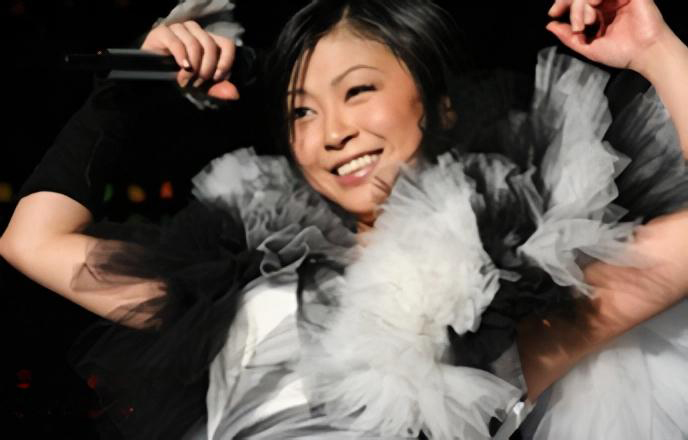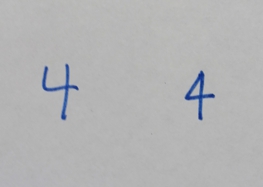|
Mangekyō Kirakira
is the J-pop duo Rythem's fifth single. It was released on May 26, 2004 under Sony Music Entertainment Japan label. The title track was used as the theme song for Nippon Television's drama entitled ''Hikari to Tomo ni... ~Jiheishouji wo Kakaete~''. This single was able to reach the #13 spot in the Oricon Singles Chart The Oricon Singles Chart is the Japanese music industry-standard Single (music), singles popularity chart issued daily, weekly, monthly and yearly by Oricon. Chart rankings are based on physical singles' sales. Until 2017, Oricon did not track down ..., making it Rythem's second most successful single to date. The item's stock number is AICL-1534. Track listing #Mangekyō Kirakira #:Composition/lyrics: Rythem #:Arrangement: Chokkaku #Rapunzel #:Composition/lyrics: Rythem #:Arrangement: Chokkaku #Mangekyō Kirakira (instrumental) #Rapunzel (instrumental) References 2004 singles Rythem songs 2004 songs Sony Music Entertainment Japan singles {{200 ... [...More Info...] [...Related Items...] OR: [Wikipedia] [Google] [Baidu] |
Rythem
is a Japanese pop duo signed to Sony Music Japan consisting of two female members, vocalist/pianist and vocalist/guitarist . Rythem was active from 2003 until 2011; in 2021, they announced their return to performing on their official YouTube channel. History In May 2003, while both performers were still high school seniors, Rythem's first single, "Harmonia", was released and was used as the second ending theme song for the anime ''Naruto''. Four more singles, including the theme song for '' With the Light'' and their debut album '' Utatane,'' were released before " Hōki Gumo" was released in early 2005 as a single for the first opening theme of ''Yakitate!! Japan''. Their eighth single, " 20 Tsubu no Kokoro", was a collection of songs dedicated by Yui and Yuka to each other. The ninth single, "Kokoro Bīdama" was used as the sixth and final ending theme song of ''Yakitate!! Japan''. The tenth single, " Negai" and was used as the ending theme of the Nippon TV show ''Sukkir ... [...More Info...] [...Related Items...] OR: [Wikipedia] [Google] [Baidu] |
Utatane
''Utatane'' is the first album from the Japanese duo RYTHEM is a Japanese pop duo signed to Sony Music Japan consisting of two female members, vocalist/pianist and vocalist/guitarist . Rythem was active from 2003 until 2011; in 2021, they announced their return to performing on their official YouTube ..., released in 2004. Track listing #"風船雲" (Fuusen Kumo) Balloon Cloud (4:02) #"ハルモニア" (HARUMONIA) Harmonia (4:16) #"一人旅シャラルラン" (Hitoritabi Shararuran) Travelling Alone (4:36) #"万華鏡キラキラ" (Mangekyou KIRAKIRA) Sparkly Kaleidoscope (4:32) #"Circulate" (4:37) #"小麦色のラブソング" (Komugiiro no RABUSONGU) Love Song of Cocoa Brown (6:18) #"EVERY" (4:53) #"てんきゅっ" (Tenkyu) Thank You (4:05) #"ブルースカイ・ブルー" (BURU- SUKAI BURU-) Blue Sky Blue (3:21) #"青春時代" (Seishun Jidai) Youthful Days (4:59) #"女友達" (Onna Tomodachi) Girlfriend (4:35) #"ラプンツェル" (RAPUNSHERU) Rapunzel (5:03) ... [...More Info...] [...Related Items...] OR: [Wikipedia] [Google] [Baidu] |
J-Pop
J-pop (often stylized in all caps; an abbreviated form of "Japanese popular music"), natively known simply as , is the name for a form of popular music that entered the musical mainstream of Japan in the 1990s. Modern J-pop has its roots in traditional music of Japan, and significantly in 1960s in music, 1960s pop music, pop and rock music. J-pop replaced ''kayōkyoku'' ("Lyric Singing Music"), a term for Japanese popular music from the 1920s to the 1980s in the Japanese music scene. Japanese rock bands such as Happy End (band), Happy End fused the Beatles and Beach Boys-style rock with Japanese music in the 1960s1970s. J-pop was further defined by New wave music, new wave and Crossover music, crossover Jazz fusion, fusion acts of the late 1970s, such as Yellow Magic Orchestra and Southern All Stars. () Popular styles of Japanese pop music include city pop and technopop during the 1970s1980s, and Eurobeat#J-Euro, J-Euro (such as Namie Amuro) and Shibuya-kei during the 1990s and 2 ... [...More Info...] [...Related Items...] OR: [Wikipedia] [Google] [Baidu] |
Sony Music Japan
, often abbreviated as SMEJ or simply SME, and also known as Sony Music Japan for short (stylized as ''SonyMusic''), is a Japanese music arm for Sony. Founded in 1968 as CBS/Sony, SMEJ is directly owned by Sony Group Corporation and is operating independently from the United States–based Sony Music Entertainment due to its strength in the Japanese music industry. Its subsidiaries include the Japanese animation production enterprise, Aniplex, which was established in September 1995 as a joint-venture between Sony Music Entertainment Japan and Sony Pictures Entertainment Japan, but which in 2001 became a wholly owned subsidiary of Sony Music Entertainment Japan. It was prominent in the early to mid 1990s producing and licensing music for animated series such as '' Roujin Z'' from acclaimed Japanese comic artist Katsuhiro Otomo and Capcom's ''Street Fighter'' animated series. Until March 2007, Sony Music Japan also had its own North American sublabel, Tofu Records. Releases ... [...More Info...] [...Related Items...] OR: [Wikipedia] [Google] [Baidu] |
Houki Gumo
''Mugen Factory'' (夢現ファクトリー, ''Waking Dream Factory'') is the second album from the Japanese duo Rythem is a Japanese pop duo signed to Sony Music Japan consisting of two female members, vocalist/pianist and vocalist/guitarist . Rythem was active from 2003 until 2011; in 2021, they announced their return to performing on their official YouTube .... It was released on May 24, 2006 under Sony Music Entertainment Japan. The album contains songs from their 6th up to 10th single. The item's stock number is AICL-1746. Track listing #"ピカソの休日" (Picasso no Kyuujitsu) #"三日月ラプソディー" (Mikazuki Rhapsody) #"ホウキ雲" (Houki Gumo) #"ココロビーダマ" (Kokoro Bīdama) #"名を持つ人へ" (Na wo Motsu Hito e) #"Song for you" #"月のウサギ" (Tsuki no Usagi) #"キセキ" (Kiseki) #"願い" (Negai) #"車輪の下" (Sharin no Shita) #"フラミンゴ" (Flamingo) #"気球が虹を越えた日" (Kikyuu ga Niji wo Koeta Hi) #"Dear Frie ... [...More Info...] [...Related Items...] OR: [Wikipedia] [Google] [Baidu] |
Sony Music Entertainment Japan
, often abbreviated as SMEJ or simply SME, and also known as Sony Music Japan for short (stylized as ''SonyMusic''), is a Japanese music arm for Sony. Founded in 1968 as CBS/Sony, SMEJ is directly owned by Sony, Sony Group Corporation and is operating independently from the United States–based Sony Music, Sony Music Entertainment due to its strength in the Japanese music industry. Its subsidiaries include the anime, Japanese animation production enterprise, Aniplex, which was established in September 1995 as a joint-venture between Sony Music Entertainment Japan and Sony Pictures Entertainment Japan, but which in 2001 became a wholly owned subsidiary of Sony Music Entertainment Japan. It was prominent in the early to mid 1990s producing and licensing music for animated series such as ''Roujin Z'' from acclaimed Japanese comic artist Katsuhiro Otomo and Capcom's ''Street Fighter'' animated series. Until March 2007, Sony Music Japan also had its own North American sublabel, To ... [...More Info...] [...Related Items...] OR: [Wikipedia] [Google] [Baidu] |
Oricon Singles Chart
The Oricon Singles Chart is the Japanese music industry-standard Single (music), singles popularity chart issued daily, weekly, monthly and yearly by Oricon. Chart rankings are based on physical singles' sales. Until 2017, Oricon did not track download sales. In Japan, physical sales decreased sharply in the 2000s, while download sales hit three to four times the amount of single sales. In November 2017, Oricon introduced its first digital songs chart, separate from its main physical singles chart. On December 24, 2018, Oricon launched a streaming chart, and introduced a combined singles chart that utilizes physical single sales, downloads, and streams. Original Confidence Inc., the original Oricon company, was founded by the former Snow Brand Milk Products promoter Sōkō Koike in 1967. That November, the company began publishing a singles chart on an experimental basis. Entitled . The chart became official on January 4, 1968. Charts are published every Tuesday in Oricon Style and ... [...More Info...] [...Related Items...] OR: [Wikipedia] [Google] [Baidu] |
Oricon
, established in 1999, is the holding company at the head of a Japanese corporate group that supplies statistics Statistics (from German language, German: ', "description of a State (polity), state, a country") is the discipline that concerns the collection, organization, analysis, interpretation, and presentation of data. In applying statistics to a s ... and information on music and the music industry in Japan and Western music. It started as , which was founded by Sōkō Koike in November 1967 and became known for its music charts. Oricon Inc. was originally set up as a subsidiary of Original Confidence and took over the latter's Oricon record charts in April 2002. The charts are compiled from data drawn from some 39,700 retail outlets () and provide sales rankings of music CDs, DVDs, electronic games, and other entertainment products based on weekly tabulations. Results are announced every Tuesday and published in ''Oricon Style'' by subsidiary Oricon ... [...More Info...] [...Related Items...] OR: [Wikipedia] [Google] [Baidu] |
2004 Singles
4 (four) is a number, numeral and digit. It is the natural number following 3 and preceding 5. It is a square number, the smallest semiprime and composite number, and is considered unlucky in many East Asian cultures. Evolution of the Hindu-Arabic digit Brahmic numerals represented 1, 2, and 3 with as many lines. 4 was simplified by joining its four lines into a cross that looks like the modern plus sign. The Shunga would add a horizontal line on top of the digit, and the Kshatrapa and Pallava evolved the digit to a point where the speed of writing was a secondary concern. The Arabs' 4 still had the early concept of the cross, but for the sake of efficiency, was made in one stroke by connecting the "western" end to the "northern" end; the "eastern" end was finished off with a curve. The Europeans dropped the finishing curve and gradually made the digit less cursive, ending up with a digit very close to the original Brahmin cross. While the shape of the character ... [...More Info...] [...Related Items...] OR: [Wikipedia] [Google] [Baidu] |
Rythem Songs
is a Japanese pop duo signed to Sony Music Japan consisting of two female members, vocalist/pianist and vocalist/guitarist . Rythem was active from 2003 until 2011; in 2021, they announced their return to performing on their official YouTube channel. History In May 2003, while both performers were still high school seniors, Rythem's first single, "Harmonia", was released and was used as the second ending theme song for the anime ''Naruto''. Four more singles, including the theme song for '' With the Light'' and their debut album ''Utatane,'' were released before " Hōki Gumo" was released in early 2005 as a single for the first opening theme of ''Yakitate!! Japan''. Their eighth single, " 20 Tsubu no Kokoro", was a collection of songs dedicated by Yui and Yuka to each other. The ninth single, "Kokoro Bīdama" was used as the sixth and final ending theme song of ''Yakitate!! Japan''. The tenth single, " Negai" and was used as the ending theme of the Nippon TV show ''Sukkiri' ... [...More Info...] [...Related Items...] OR: [Wikipedia] [Google] [Baidu] |
2004 Songs
4 (four) is a number, numeral and digit. It is the natural number following 3 and preceding 5. It is a square number, the smallest semiprime and composite number, and is considered unlucky in many East Asian cultures. Evolution of the Hindu-Arabic digit Brahmic numerals represented 1, 2, and 3 with as many lines. 4 was simplified by joining its four lines into a cross that looks like the modern plus sign. The Shunga would add a horizontal line on top of the digit, and the Kshatrapa and Pallava evolved the digit to a point where the speed of writing was a secondary concern. The Arabs' 4 still had the early concept of the cross, but for the sake of efficiency, was made in one stroke by connecting the "western" end to the "northern" end; the "eastern" end was finished off with a curve. The Europeans dropped the finishing curve and gradually made the digit less cursive, ending up with a digit very close to the original Brahmin cross. While the shape of the chara ... [...More Info...] [...Related Items...] OR: [Wikipedia] [Google] [Baidu] |



